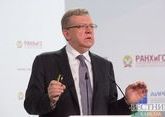The size of Russia’s shadow economy was equal to 20% of the GDP in 2018, according to the Rosfinmonitoring state financial watchdog.
The watchdog recorded 20.7 trillion rubles ($315.9 billion) in undeclared imports and income taxes, as well as under-the-table salaries and other suspicious transactions, last year, the RBC news website reported. That amounts to a little under 20% of Russia’s 103.6 trillion ruble GDP, the news outlet added.
The value of the shadow economy rose slightly from 2017, when it was estimated at 18.9 trillion rubles. Meanwhile, in 2016, the shadow economy was estimated as having a value of 24.3 trillion rubles, or 28% of GDP.
The 20.7 trillion ruble shadow economy last year was bigger than the 18 trillion rubles allocated to total federal budget spending in 2019.
According to the Rosfinmonitoring report, almost 15 million Russians worked off the books in 2018 with a total illicit payroll of around 11 trillion rubles.
The professor at the department of the stock market and investments at the Higher School of Economics, Alexander Abramov, speaking to Vestnik Kavkaza, explained that the size of the shadow economy was reduced by creating favorable conditions for access to the white economy.
"Those who are engaged in self-employment have been given the opportunity to be officially registered without being subject to special sanctions," he noted.
In addition, according to the expert, repressive measures were taken against the shadow economy. "The banks were put in charge of ensuring that people did not launder money. It had some effect," Alexander Abramov said.
"The third factor is that in recent years people's incomes have declined. Unfavorable for business measures have been implemented, for example,” the professor at the department of the stock market and investments at the Higher School of Economics said.
The fact that the share of the shadow economy in Russia is higher compared with some developed and some emerging markets was explained by the expert with the fact that Russia is more attentive to accounting for this sector. "That is, the figures of 20-23% are a bit overstated. What will happen in the future? I do not see any serious prerequisites for reducing this indicator, because those who are engaged in the gray sector have not so much incentive to enter the white economy," Alexander Abramov concluded.
The advisor on macroeconomics to the CEO of the 'Opening-Broker' brokerage house, economist Sergey Hestanov in the first place noted that it is simply impossible to measure the volume of the shadow economy with high accuracy. "Second, most of the goods and services offered by participants in the shadow economy are usually focused on individuals," the expert said.
At the same time, he drew attention to the fact that a drop in real disposable incomes of citizens was recorded in Russia in the last five years, so the very possibility of individuals using goods and services from the shadow economy is declining. As a result, the shadow economy is also slowly shrinking," Sergey Khestanov explained.
Speaking about how significant the current volume of the Russian shadow economy is, he noted that it is more correct to focus on the number in percentage terms in this matter. "For such countries as Russia, this is a rather average figure. As a rule, the higher the incomes of citizens, the smaller the shadow economy's share, and vice versa," the advisor on macroeconomics to the CEO of the 'Opening-Broker' brokerage house said.
In addition, he suggested that we should expect a slow decline in the share of the shadow economy in the future. "This is well contributed by the processes of digitalization, non-cash payments, toughening of control. But this is an area where any changes are quite slow," Sergey Hestanov concluded.










